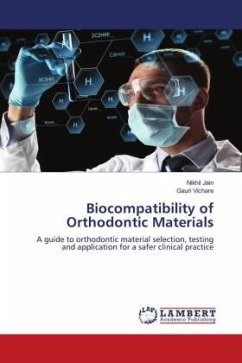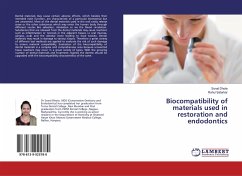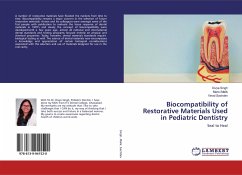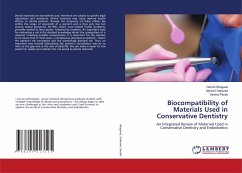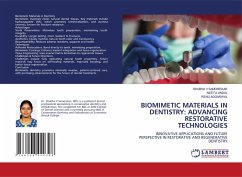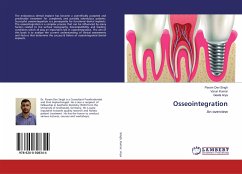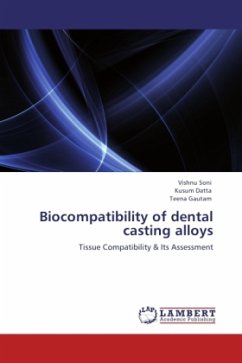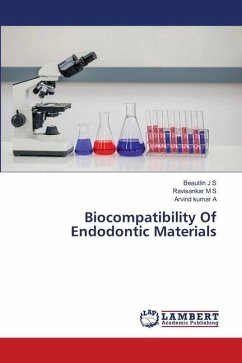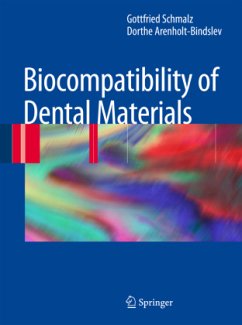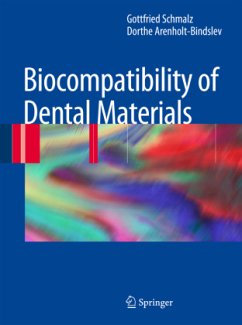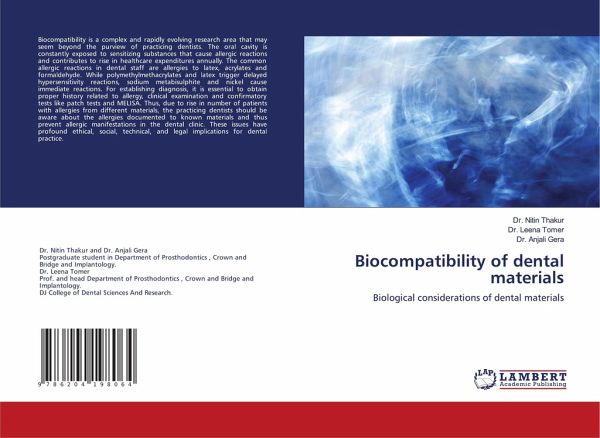
Biocompatibility of dental materials
Biological considerations of dental materials
Versandkostenfrei!
Versandfertig in 6-10 Tagen
27,99 €
inkl. MwSt.

PAYBACK Punkte
14 °P sammeln!
Biocompatibility is a complex and rapidly evolving research area that may seem beyond the purview of practicing dentists. The oral cavity is constantly exposed to sensitizing substances that cause allergic reactions and contributes to rise in healthcare expenditures annually. The common allergic reactions in dental staff are allergies to latex, acrylates and formaldehyde. While polymethylmethacrylates and latex trigger delayed hypersensitivity reactions, sodium metabisulphite and nickel cause immediate reactions. For establishing diagnosis, it is essential to obtain proper history related to a...
Biocompatibility is a complex and rapidly evolving research area that may seem beyond the purview of practicing dentists. The oral cavity is constantly exposed to sensitizing substances that cause allergic reactions and contributes to rise in healthcare expenditures annually. The common allergic reactions in dental staff are allergies to latex, acrylates and formaldehyde. While polymethylmethacrylates and latex trigger delayed hypersensitivity reactions, sodium metabisulphite and nickel cause immediate reactions. For establishing diagnosis, it is essential to obtain proper history related to allergy, clinical examination and confirmatory tests like patch tests and MELISA. Thus, due to rise in number of patients with allergies from different materials, the practicing dentists should be aware about the allergies documented to known materials and thus prevent allergic manifestations in the dental clinic. These issues have profound ethical, social, technical, and legal implications for dental practice.



